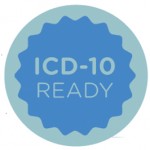Another aspect of the technical challenge is that Oct. 1, 2015, happens to be a Thursday—which means that claims submitted on Wednesday that week will need to be handled differently on Thursday. Further, there will be a period of time in which claims need to be processed in both formats, depending on dates of service. Billing professionals will have to be extra vigilant and watch service dates for a while to ensure that claims are processed correctly.
Learning the New Code
One especially important aspect to being prepared for the go-live is to provide staff training ahead of time. Staff training will be key for ensuring a smooth transition to the new coding set and for keeping the day-to-day practice of documenting and billing on track.
To help ensure that staff members are successful after ICD-10 goes live and that there are minimal disruptions to practice, the ACR recommends categorizing which staff members need to receive training and at what levels, coordinating the timeline for training and working with the team on completion, identifying the training format that works best for the team (e.g., classroom, online, conference), deciding on the amount of downtime for the office during training and identifying what additional resources staff members will need after training is completed.
In particular, the ACR identified three groups and levels that are integral to ensuring proper staff training:
- Administrative staff (e.g., schedulers, receptionist)—overview and general understanding of the new ICD-10 code structure;
- Clinical staff (e.g., physician assistants, nurses, nurse practitioners)—clinical concepts and level of detail in ICD-10 for documentation purposes; and
- Physicians and coders—clear understanding of the new code structure, coding guidelines and conventions related to specificity.
In addition to receiving in-depth training on ICD-10, coders who hold a coding membership from the AAPC will need to complete a proficiency assessment by Dec. 31, 2015, to satisfy their certification maintenance requirement.
In many cases, physicians are relying on their EMR vendor for training or to ensure a smooth transition. Elena Weinstein, MD, of Arthritis and Rheumatology of Denver, is contracted with an EMR/billing provider, “and the program does much of the work for ICD-10. We have no paper charts, and all our billing is electronic, so no superbills,” she says.
Another consideration during training periods is how to collaborate when numerous people need to enter data into the EMR. This challenge is known as “chart etiquette,” Dr. King explains. “Providers will need to keep problem lists current, removing old or inactive problems promptly. You can imagine how large a problem list can be if 15 different specialties all enter problems specific to their field. It potentially reaches the point of being unmanageable. Healthcare systems need to start thinking about how to manage both problem and medication lists correctly in the medical record.”
There will be a period of time in which claims need to be processed in both formats, depending on dates of service. Billing professionals will have to be extra vigilant & watch service dates for a while to ensure that claims are processed correctly.
Budgeting & Financial Considerations
Staff training time and resources are important, although this constitutes a financial consideration in the transition. Training time, software upgrades and other considerations are all rolled into current projections on the cost of implementing ICD-10 across the U.S. And the total cost is projected to be significant.

